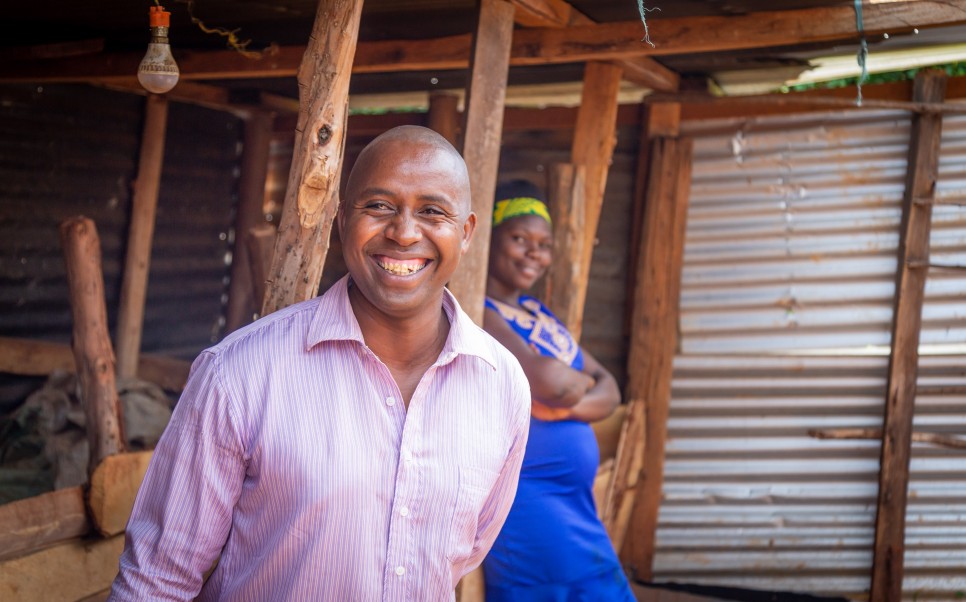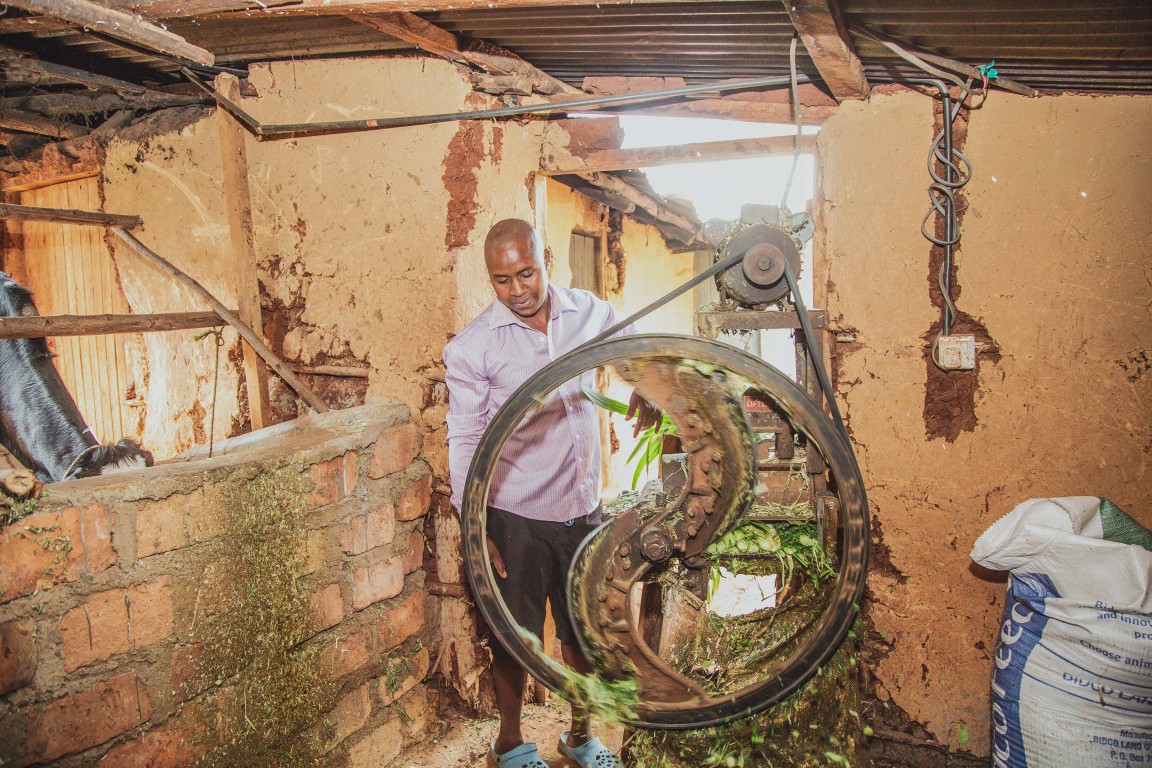with our monthly newsletter.
Source: Kenya Investment Mechanism
Livestock contributes to the livelihoods of about 1.7 billion of the world's poor, and 70% of those employed in the sector are women. Livestock can provide a source of income and savings and also provide inputs for crop production, like traction power and manure. The sector plays a huge role in reducing poverty, improving resiliency, and combating food security and malnutrition. Better yet, the UN Food and Agriculture Organization (FAO) expects the demand for livestock products to grow.
But there are challenges: small-scale production often has low productivity levels and low incomes, often because of limited access to technologies, infrastructure, credit, land, and technical know-how.

Kenya: Land and Financing
One young couple in Kenya, Job Nyangeso and his wife Mercyline, manage a small dairy farm.
"The opportunities in dairy farming generally are inexhaustible," Job tells us. "With a fast-growing population, the demand is becoming exponential for milk as most people choose to drink tea at least once a day."
But in Kisii County, where Job and Mercyline live, there isn't enough land to go around. Without land to grow their own fodder – dried hay for livestock feed - the couple is forced to buy more expensive feed from the few producers around. This keeps the production – and the profits – of dairy farming low.
Musoni Microfinance helped Job get a loan of USD 700, which he used to buy a cow and a fodder cutting machine in 2017. By the end of 2018, Job repaid the loan and secured a new one of USD 1,400, which he used to expand his dairy farm.

The couple bought another cow – which they named "Musoni" after the microfinance institute – and rented three pieces of land to grow fodder.
It's unusual for farmers to grow their own feed; most decide to grow the traditional crop maize. By planting their own fodder they're saving the costs of buying their own feed, and Job's enterprising goes even beyond this: "I'm hoping to sell to my neighbours, too, and boost my income," he declares.
Over the past year, their daily production has increased by seven litres. Now, they're collecting 25 litres per day, and can sell the milk at about 32 cents a litre.
"The more comfortable, happier, and better taken care of a cow is, the more productive it is," notes Job. Mercyline agrees, saying, "We hear that in some other parts of the world farmers use mattresses for their cows to sleep on and even play some music for the cows during milking."
The Next Generation
The Agricultural Society of Kenya (ASK) has raised the alarm over the high number of youths abandoning farming in Kenya. ASK research shows the sector is dominated by farmers aged 50 to 70. The agricultural sector has huge potential to be a source of livelihood and employment opportunities for the youth, and Africa has the youngest population in the world.
The FAO cites three main challenges to attracting and retaining youth as the next generation of farmers: a lack of access to knowledge, information, and education, limited access to land, and inadequate access to financial services.
According to the FAO, "Promoting financial products catered to youth, mentoring programs, and start-up funding opportunities can all help remedy this issue."
But Job says, "Dairy farming is the best thing I could have done."
"In no other business can your stock be doubling every year. But with each of my cows delivering a calf every year, I am most contented with what I am doing."
Musoni Microfinance has given loans to about 200 farmers in Kisii County, providing the access to financing that could be critical for building the next generation of farmers.
Over the last year, USAID Development Credit Authority (DCA) has been working with Musoni Microfinance and other financial institutions to help farmers better access finance to increase milk production and develop fodder. Palladium implements the Feed the Future Kenya Investment Mechanism (KIM), which is increasing utilisation of the DCA partial guarantee, thus lowering risks for financial institutions and increasing financing activity of DCA partner institutions in agriculture and clean energy.
with our monthly newsletter.

